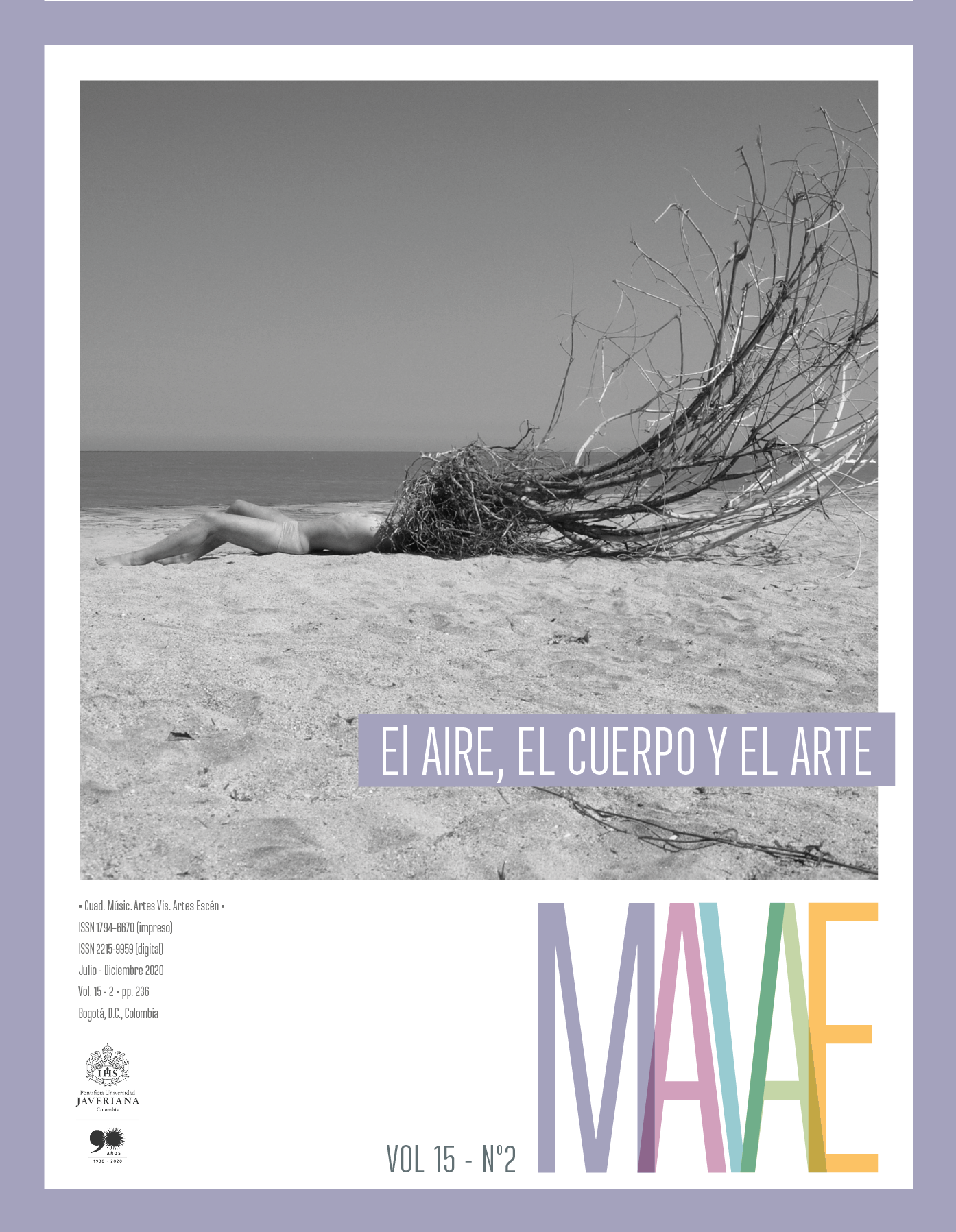Abstract
The work of African photojournalists is still assumed as mere documentary record or as a means of representing a supposedly defined post-colonial national identity. The article distances itself from that reading and shows how Osodi articulates testimony, document, fiction and poetic image in ‘pensive images’ that ponder some ecological dynamics and tensions of the Niger delta, one of the most bio- and ethno-diverse and oil-exploited regions in the world. To this end, the article assumes a formal and contextual interpretation of the series Oil Rich Niger Delta (2003-2007) which, in dialogue with elements of the history of this oil-producing nation and region, and with references from oral tradition, poetry and ecocriticism, understands the air as a subject and actor in a broad ecological network of humans and non-humans, and as a metaphorical resource with which Osodi investigates some of the complex ecological tensions and a new cosmology of the Delta. Emphasizing on air as both a metaphor and acting element, it shows how Osodi breaks with the idea that African photojournalism is primarily anthropocentric, and how he meticulously works with connections between humans and non-humans as part of a rich social assemblage in which the photographer gives dignity to actants and actors.
Bachelard, Gastón. 1966. Psicoanálisis de fuego. Madrid: Alianza.
Bachelard, Gastón. 1993. El aire y los sueños. México: Fondo de Cultura Económica.
Bayelsa State Union. 2019. “What is Egbesu?”. Consultado: 20 de septiembre de 2019. https://web.archive.org/web/20121014192943/ http:/www.bayelsa.org.uk/main/what-isegbesu/
Bhabha, Homi, ed. 1990. Nation and Narration. Londres: Routledge.
Bueger, Christian y Jan Stockbruegger. 2017. “Actor-Network Theory: Objects and Actants, Networks and Narratives”. En Technology and World Politics: An Introduction, editado por Daniel R. McCarthy, 42-59. Abingdon: Routledge.
Caminero-Santangelo, Byron. 2014. Different Shades of Green: African Literature, Environmental Justice, and Political Ecology. Charlottesville: University of Virginia Press.
Ce, Chin. 2008. “Introduction: The Art of Younger Poets”. En New Voices: A Collection of Recent Nigerian Poetry, editado por Gloria Monica Emezue, 15-39. Garcena: The African Books Network.
Clark, John Pepper. 2020. “Night Rain”. Consulta: 31 de marzo de 2020. https://allpoetry.com/poem/10602495-Night-Rain-by-John-Pepper-Clark
Crayford, Steven. 1996. “Ogoni Uprising”. Africa Today 43 (2): 183-197.
Echandi, Marcela. 2004-2005. “El aire como elemento fundamental de la
imaginación en el aire y los sueños de Gaston Bachelard”. Revista Estudios 18-19: 95-103.
Festac ’77 Visitors Guide to the Festival. 1977. Lagos: International Secretariat.
Gaunt, Philip. Festac ’77 - Festival de Lagos. 1977; Unesco TV/Nigerian National Broadcasting Commission, 1997.
Gouveia, Sara de. (Counter) Festac ’77 ’77. 2014; Cape Town: Chimurenga, 2016.
Habila, Helon. 2011. Oil on Water. New York: W. W. Norton & Company.
Hawkes, Terence. 1977. Structuralism and Semiotics. Berkeley: University of California Press.
Iheka, Cajetan. 2018. Naturalizing Africa: Ecological Violence, Agency, and Postcolonial Resistance in African Literature. Cambridge: Cambridge University Press.
Kaplan, Flora Edouwaye S. 2008. “Idia, Queen Mother”. En The Oxford Encyclopedia of Women in World History. Vol 1: Abayomi-Czech Republicb, editado por Bonnie G. Smith, 527-528. Oxford: Oxford University Press.
LaGamma, Alisa. 2012. Heroic Africans: Legendary Leaders, Iconic Sculptures. Nueva York: The Metropolitan Museum of Art.
Latour, Bruno. 2005. Reassembling the Social: An Introduction to Actor-Network Theory. Oxford: Oxford University Press.
Loomba, Ania. 2005. Colonialism/Postcolonialism. Londres: Routledge.
Malinowski, Bronisław. 1948. Magic, Science and Religion and other Essays. Boston: Beacon Press.
Mbiti, John. 1977. “African oral Literature”. En Festac ’77, 96-97. Lagos: Africa Journal Limited/International Festival Committee.
NOSDRA (National Oil Spill Detection & Response Agency). 2019. “Nigerian Oil Spill Monitor”. Consultado: 1 de agosto de 2019.
https://nosdra.gov.ng
OPEC (Organization of the Petroleum Exporting Countries). 2019. “Nigeria Facts and Figures”. Consultado: 20 de septiembre de
2019. https://www.opec.org/opec_web/en/about_us/167.htm
Ogoni Youth Network. 2019. “Ogoni Bill of Rights”. Consultado: 12 de octubre de 2019. shorturl.at/kqJQ5
Ojaide, Tanure. 2006. The Activist. Lagos: Farafina.
Ojaide, Tanure. 2012. Stars of the Long Night. Lagos: Malthouse Press.
Ojaide, Tanure. 2015. The Tale of the Harmattan. Ibadan: Kraft Books.
Onwuachi, P. Chike. 1977. “African Identity and Ideology”. En Festac ’77, 16- 17. Lagos: Africa Journal Limited/International Festival Committee.
Okpewho, Isidore. 1993. Tides. Londres: Longman.
Oriji, John N. 2009. “Transformations in Igbo Cosmology during Slavery: A Study of the Geneses of Place-Names, Totems & Taboos”. Cahiers d’études africaines 196: 953-967.
Okonta, Ike y Oronto Douglas. 2001. Where Vultures Feast: Shell, Human Rights and Oil in the Niger Delta. San Francisco: Sierra Club.
Osodi, George. 2003-2007. “Oil Rich Niger Delta”. Consultado: 2 de septiembre de 2019. https://georgeosodi.photoshelter.com/index
Paoletti, Giulia. 2009. “Review: Paradise Lost: Revisiting the Niger Delta”. African Arts 42: 80-88.
Peter, Magelah. 2007. “Totem”. Consultado: 21 de mayo de 2007. https:// editors.eol.org/eoearth/wiki/Totem_(Environmental_ %26_Earth_Science)
Radcliffe-Brown, Alfred. 1952. Structure and Function in Primitive Society. Glencoe: The Free Press.
Raji, Remi. 2005. Lovesong for My Wasteland. Ibadan: Bookcraft.
Robinson, Alma. 1977. “African Art in Foreign Hands”. En Festac ’77, 56-59. Lagos: Africa Journal Limited/International Festival Committee.
Saro-Wiwa, Ken. 1995. A Month and A Day: A Detention Diary. Londres:Penguin Books.
Senghorel, Leopold S. 1977. “Black Culture”. En Festac ’77, 12-13. Lagos: Africa Journal Limited/International Festival Committee.
Sissako. Abderrahmane. La vie sur terre. 1998; Mali: Haut et Court, 1998.
Sumner David T. y Lisa M. Wiedman. 2013. “Eco-terrorism or Ecotage: An Argument for the Proper Frame”. ISLE: Interdisciplinary
Studies in Literature and Environment 20 (4): 855-876.
Thurber, Mark. 2019. “Gas Flaring: Why Does It Happen and What Can Stop It?”. Energy forg Growth Hub (blog), 4 de febrero, https://www.
energyforgrowth.org/memo/gas-flaring-why-does-it-happen-andwhat-can-stop-it/
Ude, King Agwu. 2008. “Birds of the Air”. En New Voices: A Collection of Recent Nigerian Poetry, editado por Gloria Monica Emezue. Garcena: The African Books Network.
Watts, Michael. 2008. “Imperial Oil: The Anatomy of a Nigerian Oil Insurgency”. Erkunde 62 (1): 27-39.
Wu, Chengyi Coral. 2016. “Towards an African-Focused Ecocriticism: The Case of Nigeria”. Tesis de doctorado, University of Nevada.

This work is licensed under a Creative Commons Attribution 4.0 International License.
Copyright (c) 2020 Juan Carlos Guerrero-Hernández



